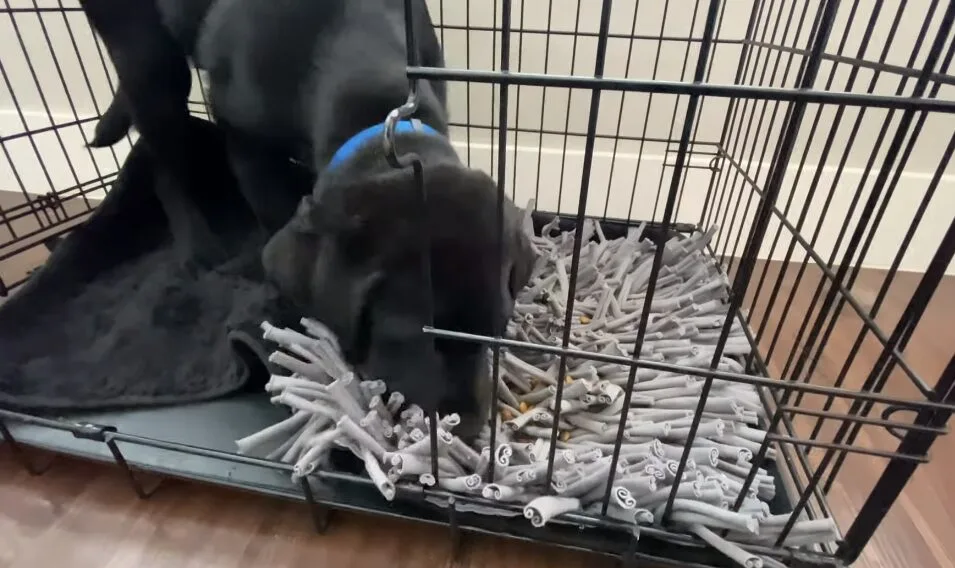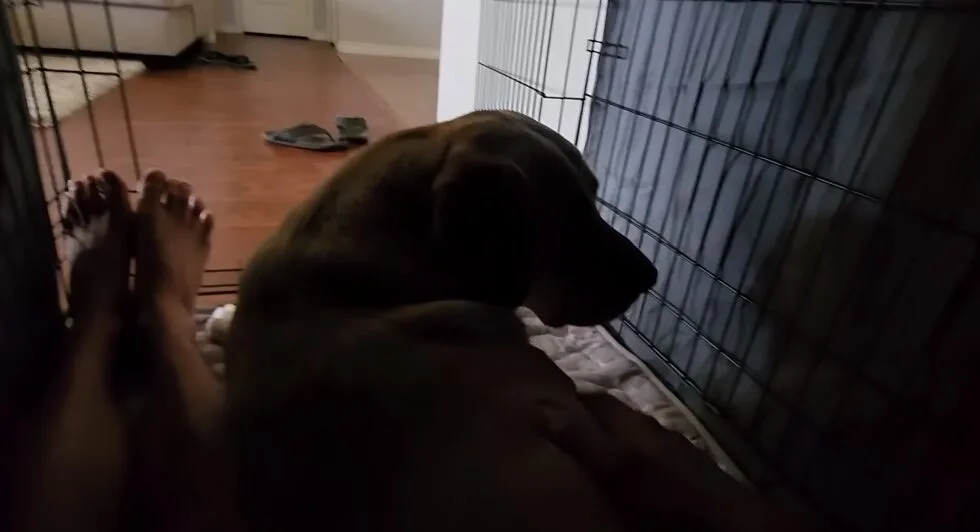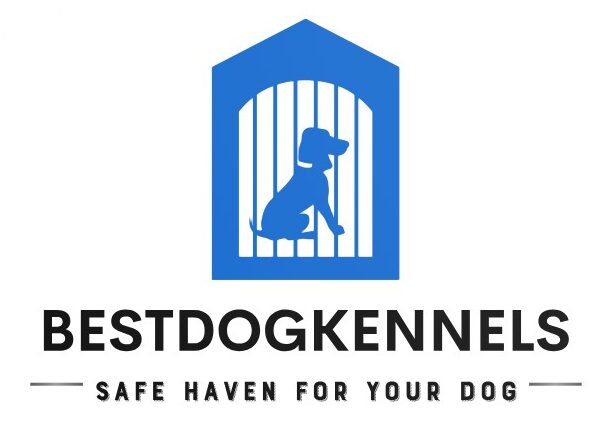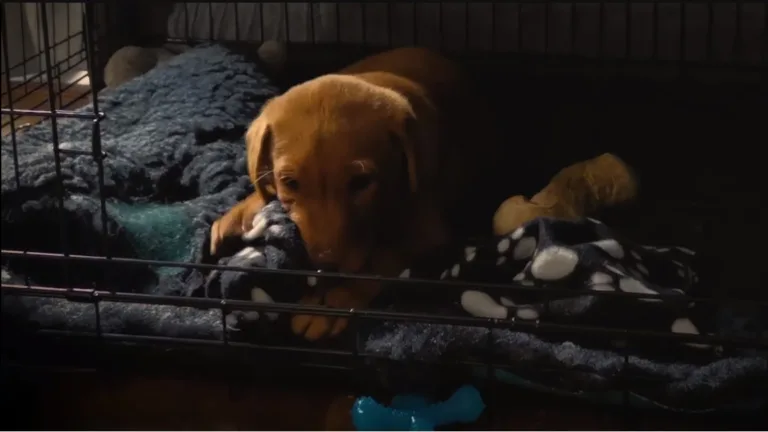How to Crate train a Puppy or An older Dog? Detailed Guide
Knowing how to crate train a puppy is a foundational step in building a healthy relationship with your pet.
Moreover, not only does it provide a safe abode for your pup, but it also helps prevent destructive behaviors when you are not around.
Crate training is also beneficial for times when confinement is necessary, like during travel or vet visits, making these experiences less stressful for both you and your puppy.
To successfully crate train your dog, you need to choose the right crate and develop a positive association between it and your furry companion.
This is typically done by rewarding them with treats as they explore the crate at their own pace.
You should then practice closing the door and leaving your dog alone to make them habitual of the crate.
However, that’s not it, as there are various other things that you must be aware of when crate training your pet.
In this guide, we have discussed everything we do to crate train our dogs. So, let’s begin.
Table of Contents
What is Crate Training a Dog?

Crate training a dog involves introducing your furry friend to a crate as a safe and familiar space.
It’s not about imprisoning them but rather providing a secure area that they can consider their own.
This process taps into your dog’s natural inclination to seek a comfortable and quiet place, especially when they feel overwhelmed by their environment.
Benefits of Crate Training Your Dog
A dog crate is not just a simple pet accessory. Instead, it can turn out to be life-changing for your pup’s well-being. Here’s how:
- Provides a safe space: Dogs, by nature, are more inclined towards sheltered spots for resting. Thus, a crate perfectly satisfies this instinct, offering them a secure place to relax without any distractions. It’s particularly useful for pets who are more prone to anxious or nervous behavior.
- Helps with potty training: After a crate becomes a safe space for your dog, it capitalizes on its tendency to keep the house clean. Consequently, your furry companion avoids soiling the area where they sleep. Instead, they learn to hold it until you take them out to their designated potty spot.
- Safeguards your pet: When you own a puppy, you have to be extra vigilant, keeping an eye on everything they do. However, it’s not possible to keep a watch over them 24/7. In this scenario, crate training ensures the safety and well-being of your pet by eliminating access to hazardous items or areas when you’re unable to supervise their every move.
- Providing a zone for recovery: When your dog is already accustomed to their crate through prior training, it becomes a familiar and secure space for them. This familiarity reduces stress during times of injury or illness, as they have a designated area where they can rest without undue stress.
Puppy Crate Training Supplies and Products

When it comes to crate training a pup, you’d require a few things to navigate through the process conveniently. These include:
1. The Right Crate
The crate you choose for your furry companion must be large enough, allowing them to lie and move around comfortably.
However, it shouldn’t be too huge with lots of extra space. For instance, if your dog’s resting area is in one corner while the bathroom is in another, the long distance would make potty training a bit challenging.
Besides the size, the dog house’s type also matters. For that, you have different options to choose from, including plastic, fabric, wire, heavy-duty, and more. Dogs can typically adjust in either, but wire crates are preferable, thanks to their versatility. For example, you can easily customize their size by adding a divider panel.
And when your dog grows, you can remove it to ensure it has adequate space.
2. Bedding
Your pup’s bedding plays a crucial role in the success of crate training.
If it’s not comfortable enough, your furry companion will develop a negative association with the kennel and will prefer to stay away from it.
Thus, be sure to select a firm bed or pad with pet-friendly fabric.
However, it’s better to avoid an overly plush bed, as it would absorb urine without leaving any sign of it, adding to your troubles.
Moreover, plush bedding can actually mask the scent, making it harder to realize if such an accident has occurred.
Also, an overly stuffed bed can tempt your pup to chew and destroy it as a part of their natural exploration process.
3. Treats
Treats are an essential part of crate training as they help create a positive association with the crate.
This way, your pup would be inclined towards spending more time inside. Always use them as a reward for even the smallest achievements.
For example, if your furry companion willingly enters the crate or remains calm inside, you can give them their favorite snack to reinforce this behavior.
Try to experiment with various fillings like peanut butter, yogurt, or frozen treats to keep your dog engaged
However, do not overfeed them and gradually decrease the frequency of treats as your pup gets more comfortable inside the crate.
4. Toys
Last but not least, you also need toys to keep your overactive puppy relaxed in the crate.
You can buy treat-stuffables that provide mental stimulation to your pet, eventually tiring them out so they can sleep peacefully.
Also, make sure to give different types of toys with various textures and shapes to prevent boredom.
Other than this, it’s equally crucial to consider the safety of your pup when selecting a toy for them.
It should be durable, non-chewable, and must not contain any toxic materials.
What is the Ideal Place to Keep a Dog Crate?
While selecting an area to place the dog crate, you must ensure that it is not too far from your home that they start feeling isolated.
This typically includes a garage or basement where your pup might feel alone and anxious.
That said, it’s recommended to keep the crate in the corner of your living room or dining room where your family members keep coming every now and then.
When you are crate training young puppies, the choice of place gets more important as you need to take them out for soiling at least once before morning. So, you must place the crate near your bed to get an idea of when your pet signals for it.
However, if, for any reason, you can not keep the crate inside your bedroom, it’s better to get a monitor to keep an eye on them.
Bonus Tip: If your pet is larger in size, it’s better to buy two crates. Since they would need an oversized kennel, moving it around would get a bit difficult.
With two crates, you can easily place one in the common area for your dog to play during the day while another in the living room for sleeping at night.
How to Crate Train a Puppy Fast – 4 Steps to Follow
Wondering how to crate train your puppy in 3 days?
Here are some simple steps we employ to crate train our puppies that can guide you through the process:
1. Introduce the Crate
When starting out, you need to let your pup explore the crate on its own. Just keep the door open, and they’d be curious enough to go inside.
If not, you can throw in their favorite treat. Once they are inside, giving your furry companion another treat can attract them to the crate more often.
Other than this, you can also place a stuffed toy, encouraging your pup to enter the crate and spend maximum time there.
During this exploration process, keep the kennel’s door open. Also, do not forget to cheer and praise your dog, as this positive approach goes a long way during crate training.
At times, your pet may not want to go inside – never force them in such a scenario.
Remember, the major goal of this step is to get them comfortable around the new surroundings of the crate.
Even if your dog goes inside and comes out the next second, consider it an achievement, as these baby steps will gradually lead to greater success.
2. Close the Door
A few attempts at the above step would definitely help your pup get familiar with the crate. After that, it is the perfect time to prolong their stay inside.
For this, you can stay outside the crate and engage your furry companion in different games. You can also give them a stuffed toy and treats to ensure they enjoy the time when in the crate.
Now, as they get busy, try closing the door.
However, do not force them to stay inside and open the door if they show even a single sign of discomfort by barking or pawing at the crate.
Again, the goal is to keep your pup inside for as long as they aren’t stressed.
3. Go Away For a Short Time
When your dog is busy playing with their toy and doesn’t notice you have closed the door, you can try leaving the room for a while.
But stay at the door to listen to their bark, which may signal they want to come outside.
If everything goes well, it’s unlikely to happen, as at this stage, your pup must have learned to settle peacefully inside the crate.
However, anxious or older dogs can take a bit more time than usual.
The key is to time the potty break, playing session, and crate time properly.
With such a routine, your pup would easily fall asleep inside the crate without giving you any tough time.
4. Stay Away For Longer Periods
Now, when your dog gets comfortable with your absence, gradually increase the time you stay away.
For example, leave the room for 1 minute at first, then make it 5 minutes and eventually an hour.
If you get worried about what your furry companion is doing when you are not present, install a pet camera to keep an eye on them.
This way, you can monitor them from a distance and take any prompt actions, if required.
Also, when you return back, keep your arrival low-key. Do not make any noise, as this may stress your pet.
Ignoring your dog for a few minutes can prevent excitement during reunions.
How to Stop Dog From Barking in the Crate?
One major problem that you can face when crate training your dog is that they might start barking as soon as you leave them alone inside.
Here’s how to get a dog to stop barking in a crate:
- Provide your pup with some treats to keep them busy. This way, they won’t see you going away and stay engaged in eating their favorite meal.
- You can also take your furry companion outdoors for some exercise. As they get tired, they would be more inclined to rest quietly inside the crate.
- Avoid immediate long confinement inside the crate, as the sudden change can make them anxious. Always start with short periods and gradually increase the time.
- In the next step of how to crate train a dog without barking, do not give extra attention to your pet when they make noises. Always wait for them to get silent before opening the crate.
- Practice leaving and returning without making a fuss, gradually increasing the duration you’re away.
- If the barking persists, consider consulting a professional dog trainer or behaviorist for tailored guidance.
How to Crate Train a Dog With Separation Anxiety?
Pets with separation anxiety might cry when you crate train them.
Here are some tips on how to crate train a dog whining to ensure the well-being of your nervous pet:
- Introduce the crate slowly and positively to help your anxious dog associate it with comfort rather than isolation.
- Practice brief departures and returns multiple times a day, gradually extending the time you’re away to reduce the anxiety associated with your absence.
- Consult with a veterinarian about the potential use of medication or supplements that can help manage your dog’s separation anxiety while crate training.
- Place familiar and comforting items in the crate, such as your dog’s favorite blanket or a worn T-shirt, with your scent.
- Consider seeking the guidance of a professional dog trainer or behaviorist who specializes in separation anxiety if your dog’s anxiety is severe.
Remember, crate training an anxious dog requires a bit more time and patience.
Therefore, it is important to approach the process with empathy and understanding of your pet’s needs.
How to Crate Train a Dog with Treats and a Clicker?
Wondering how to crate train a dog who escapes?
The treat and clicker method can really work in this scenario. Here’s a step-wise guide to it:
- Use the clicker to mark and reinforce positive behaviors related to the crate. Click and treat when your dog shows interest in the crate, approaches it, or voluntarily enters it.
- Be consistent with your clicker training. Use the same clicker sound and reward your dog promptly each time they perform the desired behavior.
- As a dog’s attention span is short, you must opt for multiple training sessions in a day.
- When giving treats, place them inside the crate so that your dog associates the crate with positive experiences.
- Encourage your dog to enter and exit the crate calmly. Click and treat when they do so without rushing or showing signs of anxiety.
Remember that every dog is unique, so adjust your training approach to suit your dog’s temperament and progress at their own pace.
How to Crate Train a Dog Afraid of Crates

Dogs, when afraid of crates, might whine a lot. In such a scenario, you can refer to these steps that explain how to crate train a dog that won’t stop barking.
- Start by making the crate a positive place. Leave the crate door open and place treats, toys, and your dog’s bedding inside to encourage them to explore voluntarily.
- Allow your dog to get used to the crate at their own pace. Avoid forcing them into it or closing the door too soon.
- Serve meals near the crate initially, then move the food inside the crate to create a positive connection between food and the crate.
- Reward your dog with treats and praise when they willingly enter and exit the crate. Use verbal cues like “crate” or “bed” to associate with going inside.
- Be patient and avoid punishment if your dog is hesitant or anxious about the crate. Progress may be slow, but consistency and positive reinforcement are crucial.
3 Tips to Potty Train Your Dog Effectively
Crate training your pet goes hand in hand with potty training.
Therefore, you must take care of the following aspects to ensure both the tasks are done effectively:
- Make sure to give your furry companion a potty break before you let them go inside the crate, and repeat it once they are out of the crate.
- Avoid making your furry companion stay inside for too long. With it, they might start soiling inside.
FAQs
How do you crate train a scared rescue dog?
To crate train a scared dog, you must first take steps to create a positive association with the crate.
This can be done by placing treats and toys inside and letting the curious dog explore the kennel on its own.
Then, gradually increase the time they spend in the crate without forcing anything.
How to crate train a dog at night?
To crate train the dog, you must start by placing the dog house inside your bedroom so your pup does not feel isolated.
Other than this, make sure to establish a routine that signals bedtime. It could be anything, ranging from a final bathroom break to a calm cuddle or a quiet play session.
How old is too old to crate train a dog?
There is no strict age limit for crate training a dog. Even older pups can learn with some patience and the right techniques.
All you need to do is start slowly by letting your furry companion spend short periods in the crate. You can then gradually increase the duration.
However, older dogs may require more time as compared to the younger ones.
How to crate train an older dog?
When it comes to crate training an older dog, you would need patience and positive reinforcement.
Start by introducing the crate to them by placing treats and meals inside to encourage exploration.
Then, increase the time spent inside by providing comfortable bedding and stuffed toys to play with.
Since older dogs have already developed their habits, the process can take a bit longer than usual.
How do I stop the dog from barking in the crate when I leave?
To ensure your pup does not bark when you leave, you can provide them with a special treat or toy to divert their attention.
Moreover, always start with short absences, gradually increasing the time to make your furry companion habitual of you not being present around.
How to Crate Train a Puppy That Cries?
If you are wondering how to stop a dog/puppy from whining in a crate, begin by introducing the crate with short, positive experiences.
Gradually increase their time in it, making sure it feels safe and inviting with their favorite toys and treats.
Moreover, it’s important to initially ignore the crying and reward moments of quiet.
Wrapping Up
In conclusion, crate training a dog is a valuable approach for both the pet and the owner.
It not only provides a safe haven for your dog but also simplifies house training.
Remember, the key to success lies in patience and consistency.
So, how to crate train a puppy? Start by choosing the right-sized crate and making it comfortable.
Gradually introduce your dog to the crate, using treats and stuffable toys. Keep crate time short initially, and avoid using it as a punishment.
Over time, your dog will learn to see the crate as their own space. Crate training, when done correctly, can nourish the bond between you and your pet, ensuring a harmonious coexistence.
Start exploring our other blog posts now to discover valuable tips and tricks that will enrich the life of your dog!







